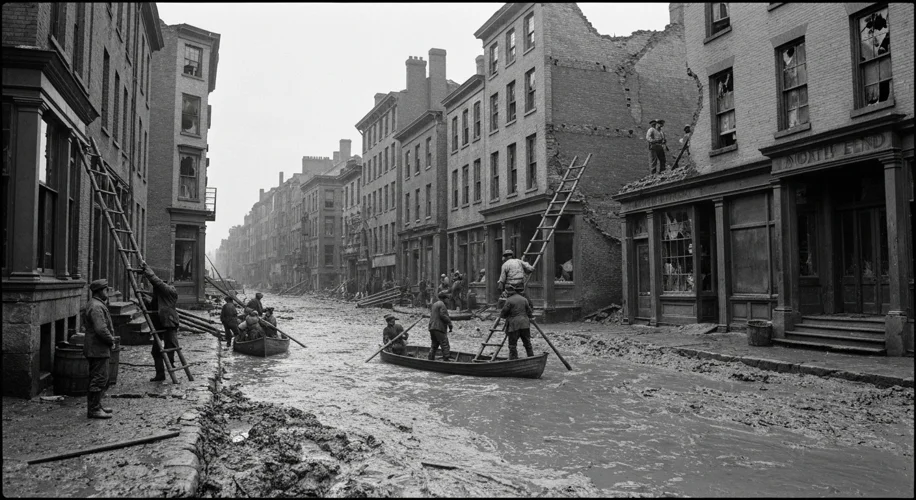The winter air in Boston on January 15, 1919, was deceptively mild. Children were returning from school, workers were heading home, and the city buzzed with the usual post-war energy. Few could have imagined that within hours, a sweet, sticky tide would engulf a neighborhood, leaving a trail of devastation and a lingering, syrupy scent.
It began with a deafening roar. A colossal storage tank, holding over two million gallons of crude molasses, burst open in Boston’s North End. The tank, owned by the Purity Distilling Company, was a familiar, if somewhat unsightly, landmark. Its contents, destined to become industrial alcohol, had been stored with a troubling disregard for safety. The tank itself was known to be poorly constructed, its rivets often weeping molasses, earning it the grim nickname “the Purity Distilling Company’s leaky tank.”

Eyewitness accounts paint a terrifying picture. A wave of molasses, described as being anywhere from 15 to 40 feet high and moving at an estimated 35 miles per hour, surged through the streets. The sheer force of the sticky flood was immense. Buildings were swept off their foundations, iron structures twisted like playthings, and the elevated railway structure of the Boston Elevated Railway was buckled and damaged. The viscous liquid trapped people and horses, suffocating them in its dense embrace.
The immediate aftermath was a scene of chaos and desperation. Rescuers, wading through waist-deep molasses, worked tirelessly to pull victims from the sticky morass. The sweetness of the molasses, once a symbol of industry and commerce, had become a harbinger of death. The air, for days afterward, was thick with the cloying smell of molasses, a grim olfactory reminder of the tragedy.
The human toll was staggering. Twenty-one people lost their lives, and over 150 were injured. The disaster also claimed the lives of many horses, which were essential for transportation and labor at the time. The economic impact was significant, with millions of gallons of molasses lost and extensive damage to property.
In the wake of the disaster, questions were raised about negligence. The Purity Distilling Company initially blamed anarchists, a common scapegoat in the tumultuous post-World War I era. However, a lengthy court case, one of the first major class-action lawsuits in Massachusetts, revealed a different story. Evidence presented showed that the tank had been hastily constructed and poorly maintained. It had been filled beyond its recommended capacity, and the unseasonably warm weather on the day of the disaster likely contributed to the increased pressure within the tank.
The court ultimately found the Purity Distilling Company liable, awarding significant damages to the victims and their families. The Great Molasses Flood served as a stark wake-up call about industrial safety standards. It highlighted the critical need for proper regulation and oversight in industries handling hazardous materials.
More than a century later, the Great Molasses Flood remains a poignant chapter in Boston’s history. It is a stark reminder of how human error and corporate negligence can have devastating consequences, and how even the sweetest substances can turn deadly when mishandled. The story serves as a crucial lesson in the ongoing struggle to balance industrial progress with public safety, a struggle that continues to shape our world today.

